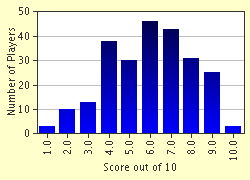Quiz Answer Key and Fun Facts
1. 'Harmonics', written by this man has been called the best scientific treatise on music theory of the Greeks:
2. This man's reputation for teaching singers to learn new chants quickly won him an invitation from Pope John XIX to Rome to explain his method of teaching by singing syllables and his new system of using lines and spaces to designate pitch heights. Who was this man?
3. By obtaining exclusive privilege from the Venetian government in 1498, his publications form the most important body of printed music issued during the first 20 years of the sixteenth century. He developed a successful method of printing polyphonic music from movable metal type by multiple impression. Name this person.
4. As a instrument maker at the court of Ferdinand de' Medici in Florence, this man began making a harpsichord that could play soft and loud. By 1700, he had completed at least one of the new keyboard instrument whose strings were activated by hammers instead of plectra. Who was this man?
5. The Metronome, a device used for determining the tempo of a musical work, was patented by this man despite its' invention by Dietrich Winkel in 1812.
6. In 1840, this man was repairing an 'ophicleide' and wanted to hear what it would sound like with a clarinet mouthpiece instead of its cup shaped mouthpiece. The saxophone was created as an result. Name this man:
7. As well as being known as one of the greatest virtuoso pianists, this composer is also credited with being the first to perform a solo piano recital by memory, and originating the symphonic poem:
8. This man composed and published many collections of songs suitable for teaching. He pioneered in music education by getting singing introduced in the public schools of Boston in 1837:
9. This virtuoso violinist had mastered the violin techniques of his time and developed a few techniques, such as ricochet bowing, left hand pizzicato, and double stops in harmonics, which other violinists had not been exposed to before:
10. This composer was the first to write an orchestral part for the celesta, a keyboard metallophone patented in 1886:
Source: Author
enchkevi
This quiz was reviewed by FunTrivia editor
1nn1 before going online.
Any errors found in FunTrivia content are routinely corrected through our feedback system.


